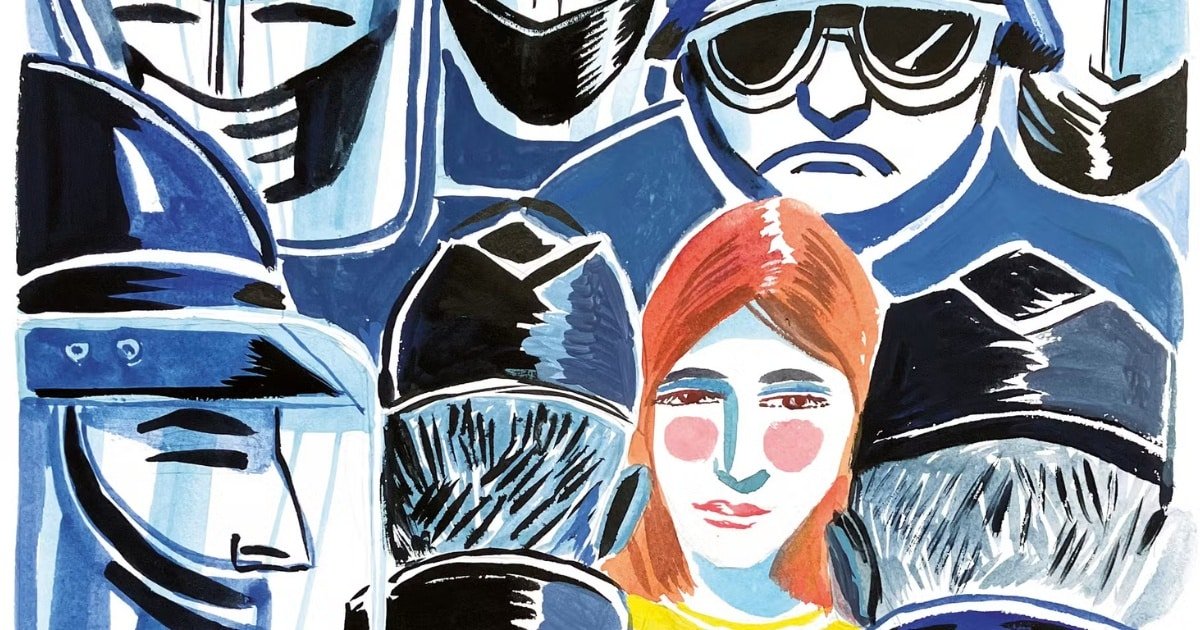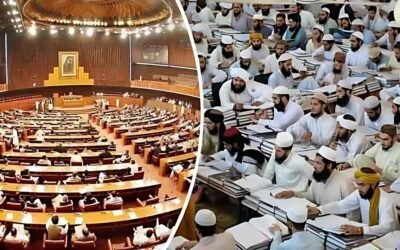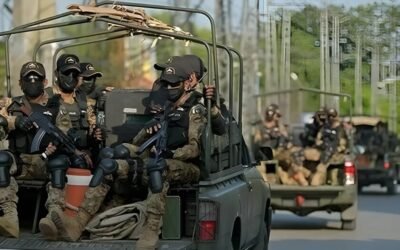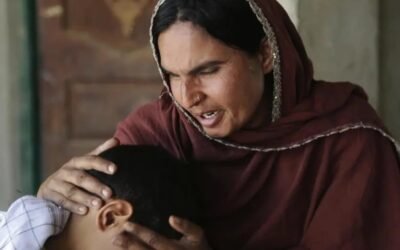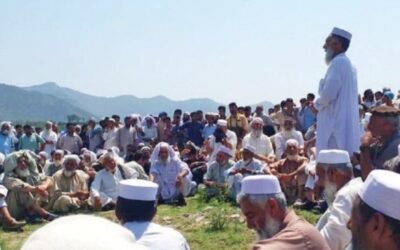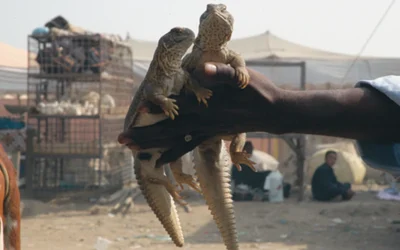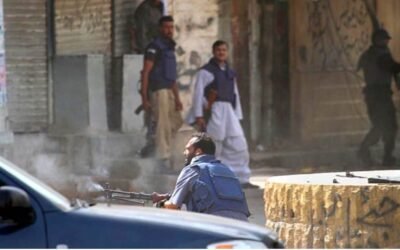Introduction
With cities becoming more chaotic, officials are rewriting training manuals for “urban warfare”. The Punjab Government recently launched a Riot Management Police (RMP). It is a special 5000-person unit. These individuals were trained through U.S., Turkish, and European crowd-control manual guidelines. The recruits underwent an 8-week-long course that taught them how to crowd-control. In particular, this course demonstrated crowd control drills designed to manage violent protests.
These steps respond to real dangers in urban areas. In the 2014 Lahore clash, the Punjab police opened fire on protestors. 14 people were killed. In another case in Karachi in 2016, protestors were met with violence. The transport workers were dealt with using batons and gunfire by the police and the Rangers. At least two died in the effort to break up the demonstration. Such incidents highlight the urgent need for reform. Law enforcement needs updated guidelines to manage riots and threats in cities.
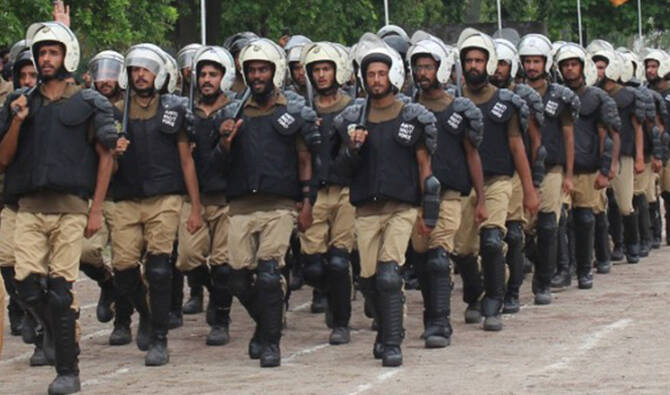
Source: Arab News
Gaps in Training and Policing Culture
Experts say Pakistan’s police have been ill-prepared for these challenges. A Human Rights Watch report detailed the demands and pressures on security forces. These reasons often lead them to take extreme measures. The report documented decades of “inadequate training and resources” across the police. Police academies still rely on basic drills and legal theory. A senior instructor told HRW that no good officers wanted to teach in schools. Important subjects like human rights are also often neglected.
These gaps in education and training show. One HRW study found that police often resort to violence due to a lack of training in the principles and practice of crowd-control management. In some cases, officers have admitted to these shortcomings. Perhaps one of the most representative examples is that of the Model Town incident in Lahore. A Punjab official acknowledged that field officers lacked the skills required to manage riots. He also blamed the incident on the absence of a specialized unit. Critics also cite decades of underinvestment as an issue. This means there is no money for training programs. Thus, officers are still using an outdated, authoritarian style, which is unsuitable for today’s urban protests.
You may read: The Police and CTDs: Challenges at the Frontline
International Approaches to Riot Policing
By contrast, many countries long ago instituted specialized riot forces and courses. India established its Rapid Action Force (RAF) in 1992. It was a dedicated unit for crowd control. The RAF employs multiple battalions. All are trained in riot tactics, crowd psychology, and rescue operations. Western democracies also deal with restraint. Police recruits in European nations are required to undergo years of training. Some even earn degrees in criminal justice. In these institutions, they are taught crowd control and de-escalation at length. On the other hand, in the U.S, police officers spend significantly less time on their training. On average, their police academy lasts about 21 weeks. Most of their training is allocated to firearms instead of crisis negotiation. This could be a reason why police brutality cases are more common in the U.S.
Policing differs from country to country. Many European forces are deployed unarmed to face mobs. Pakistan’s new police training reforms seem to be embracing a blended model. The country is adopting organized unit tactics like India’s RAF while equipping officers with modern non-lethal gear. Observers say that the police force must also learn to prioritize proportionality and crowd psychology.
Innovations and Reforms in Pakistan’s Policing
Pakistan has learned from these lessons and is showing a positive mindset. Provinces are focusing on creating new units and training programs. Punjab’s RMP is the most prominent effort. Chief Minister Maryam Nawaz said its officers have been “specially trained to manage all types of crowds, including organized violent groups”. Support teams (first aid, negotiation, snipers) are embedded into each unit. Sindh has also taken up a similar approach. The province set up an Anti-Riot Force (ARF) in 2018. The initially appointed 357 officers were deployed all over Karachi and other cities. The ARF was trained explicitly on protecting civilians and taking actions against lawbreakers during protests. Sindh’s ARF members only carry non-lethal gear such as rubber bullets and tear gas.
Similar measures are being adopted around the country. Police equipment is also being reinforced. For instance, Khyber Pakhtunkhwa (KPK) reinforced patrol-car windshields so they can withstand stone throwing. In addition, the KPK government has set up specialized riot-control schools. One school near Mardan has trained some 6000 officers as of 2019. Before large protests in Peshawar, 2250 officers were given refresher courses on anti-riot tactics and emergency aid. The efforts and exercises are showing gains. After the Azadi marches in 2019, a reporter gave a positive observation of the police. He said proper training “further improve[d] the handling of protests and violent mobs” without resorting to extreme means.
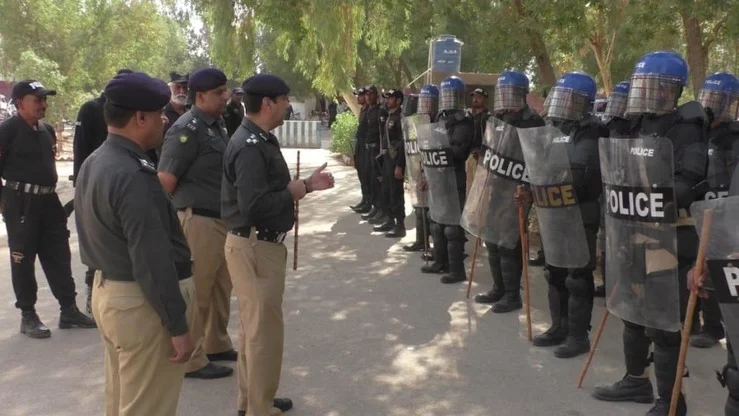
Source: Pakistan Forward
Pakistan has taken the initiative toward gender-sensitive crowd control as well. In 2023, Balochistan launched the country’s first all-female Anti Riot Unit (ARU). It comprised 48 officers. All of them had undergone specialized training that focused on how to deal with and negotiate with women protestors. The ARU’s commander emphasizes that her squad aims to negotiate and protect women in mass protests. She notes that peaceful protest is the right of every single citizen. The overall goal is to diffuse escalating situations calmly. Meanwhile, in Islamabad and Punjab, police academies are adding more nuanced modules. These programs are to focus on crowd psychology, communication, and de-escalation. This is a much-needed shift in order to improve protest policing.
Conclusion
Pakistan’s major cities are under the dual threat of terrorism and mass protests. Consequently, urban safety has become a top priority. The new reforms on riot-training show that leaders recognize the challenge. Officers are being trained in advanced anti-riot and negotiation strategies. They are also learning new formations and switching to non-lethal gear. However, experts say the solution is not to just stop using shields and tear gas. It is to understand when not to use them. Future policing must balance effectiveness with respect for citizens’ rights. The goal of these programs is to instill necessary crowd management skills. If successful, Pakistan’s cities will become much safer. Public trust in security forces will also be restored and strengthened.
You May Like To Read: The Role of Rangers in Securing Cities During National Celebrations

